This post may contain affiliate links. Please see our disclosure policy.
White bean and kale soup is a vegetarian classic, and it’s perfect for home canning.
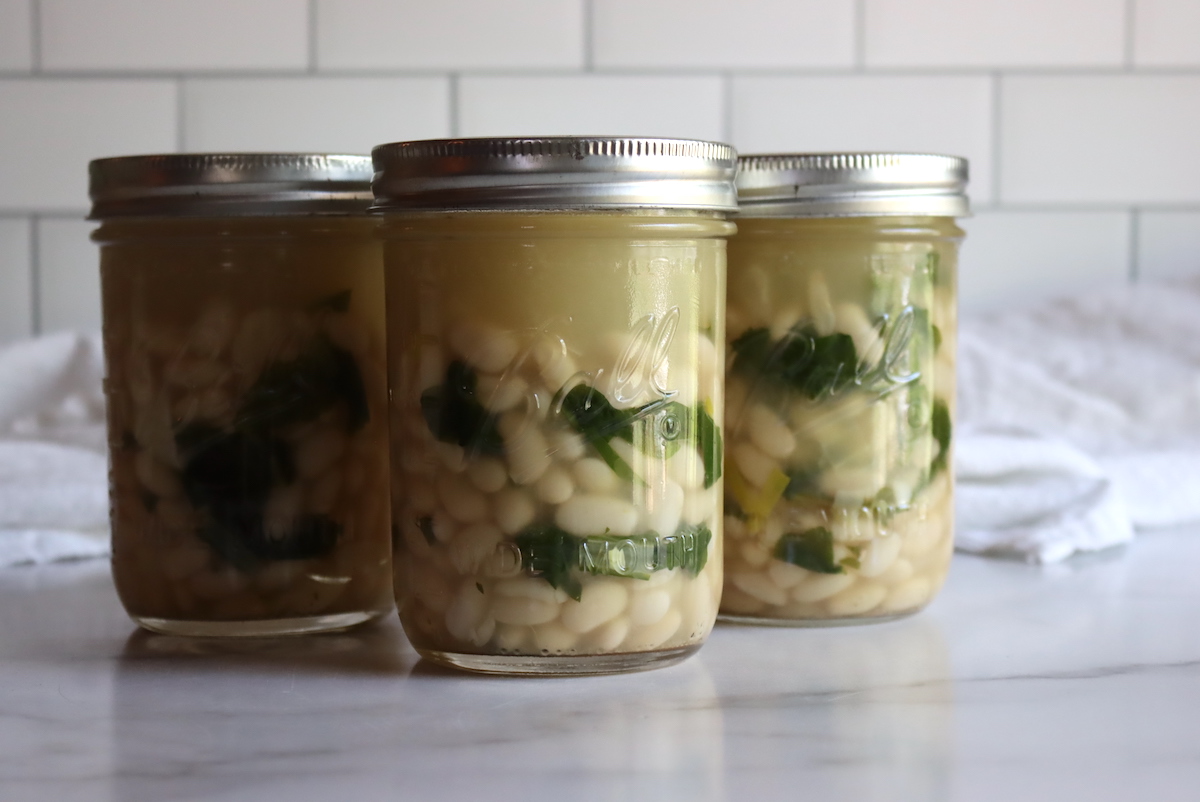
Nothing beats a delicious, hearty soup, especially during the colder months. However, making soup from scratch every time can be time-consuming and tiring.
That’s where canning comes in – with just a little bit of work upfront, you can have a delicious and nutritious meal ready to go whenever you need it.
In this post, we’ll tell you how to can white bean and kale soup.
Not only is it absolutely delicious, but it’s also packed with nutrients, making it the perfect addition to any meal.
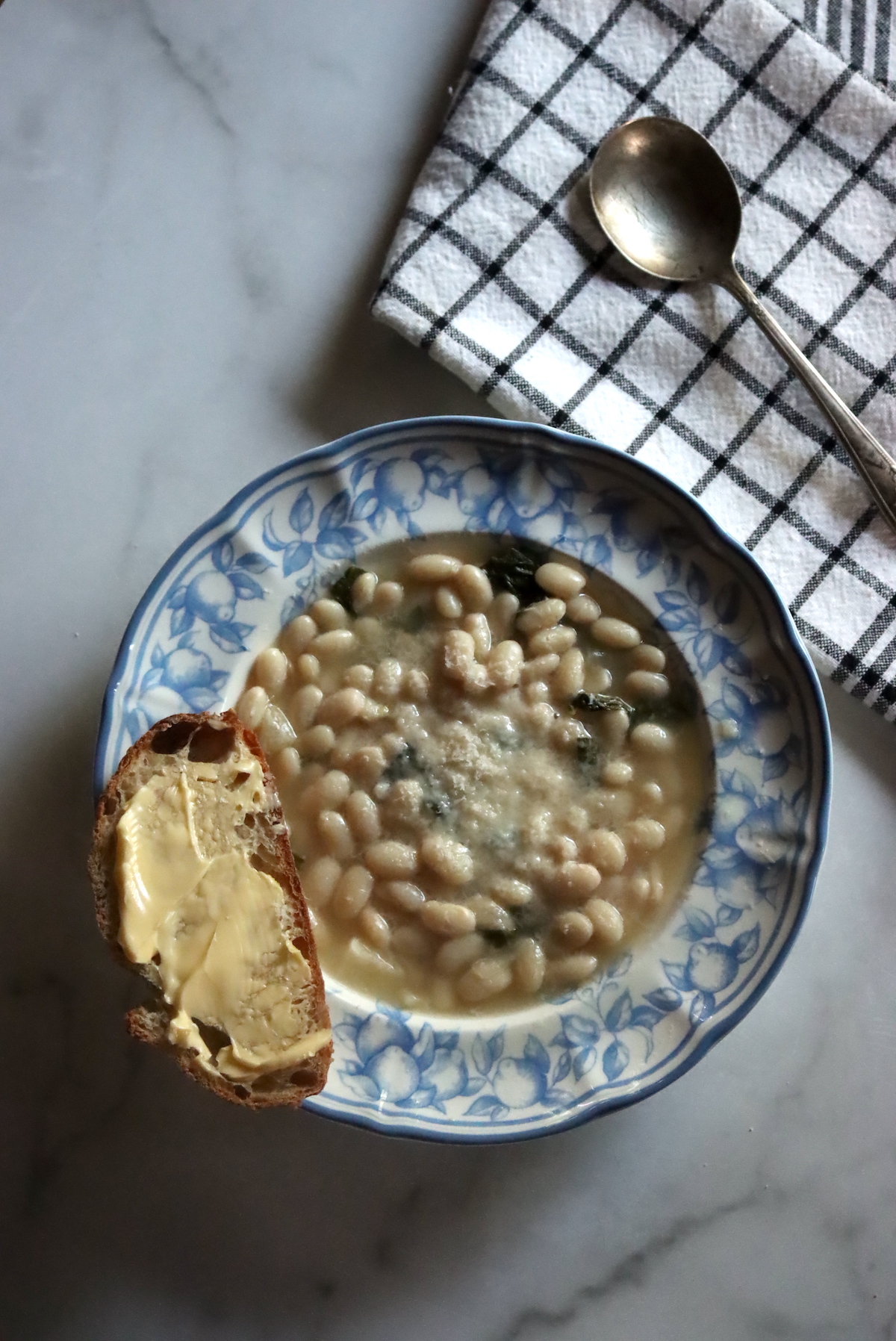
Ingredients for White Bean and Kale Soup
This recipe for canning taco soup is adapted from Pressure Canning for Beginners and Beyond by Angi Schneider, which happens to be my very favorite pressure canning book. I absolutely love this recipe, and I often substitute chard in for kale when available too.
The ingredients for canning white bean and kale soup are quite simple. To make a canner batch of 7 pint jars, you’ll need the following:
- 1 lb (454 g) dried great Northern beans (or other white beans)
- 2 cups (320 g) chopped onions
- 6 cups (1440 ml) vegetable broth
- ½ lb (226) destemmed and chopped kale, chard, or other greens
- 4 cloves garlic, minced
- 1 tbsp (15 ml) white wine vinegar
- 1 tsp non-iodized salt (or canning salt)
- ½ tsp ground black pepper
For serving:
- Smoked paprika
- ¼ cup (60 ml) cream
- Croutons
Be sure to soak your beans before starting to make this recipe. You can use the quick-soak or overnight method, but be sure to do this ahead of time so it doesn’t slow you down.
You will need about ¾ lb (340 g) of unprepared onions and ¾ lb (340 g) of kale or chard, before chopping or destemming, for this recipe.
Canning White Bean and Kale Soup
Begin by preparing your canning jars, lids, and the pressure canner itself. You will need seven 1-pint jars (500 ml). This recipe is not approved for use with quarts.
Fill the canner with a few inches (8 cm) of water, based on your manufacturer’s instructions, and palace the canner on the stovetop over low heat with the jars inside. This will keep them hot, which is necessary because this is a hot-pack recipe. The water needs to be around 180 degrees Fahrenheit, or 82 degrees Celsius.
Drain the water from the soaked beans, placing the beans in a large stockpot. Cover them with fresh water. Bring the beans to a boil, then remove them from the heat and drain the water.
Put the beans back into the stockpot, then add the broth, garlic, onions, greens, salt and pepper, and vinegar. Bring everything to a boil over high heat, then reduce to a gentle boil and boil for five minutes.
At this point, the beans and the vegetables will not be fully cooked. That’s okay! They’ll keep cooking in the jars while they are being processed. Resist the temptation to cook them fully, since this will cause the ingredients to become mushy while being canned.
Remove the stockpot from the heat, then pour the soup or ladle it into the prepared jars. Try to ladle the solids first so you have an even distribution among the jars. Divide the broth equally among the jars, leaving about one inch (or 2.5 cm) of headspace.
Use a bubble removal tool to remove the bubbles, then recheck the headspace. If you’re short on broth, use boiling water or hot chicken broth to top the jars off. Wipe the rims clean with a damp cloth, then put the bands and lids on the jars and load them into the pressure canner.
Process the jars, based on the manufacturer’s instructions, at 10 lbs of pressure (69 kPa) for 75 minutes for pints. Adjust pressure for altitude, see below.
When you are done processing, let the canner depressurize on its own. Remove the jars and allow them to cool on the counter for 12 hours. Check the seals and store your jars for up to one year.
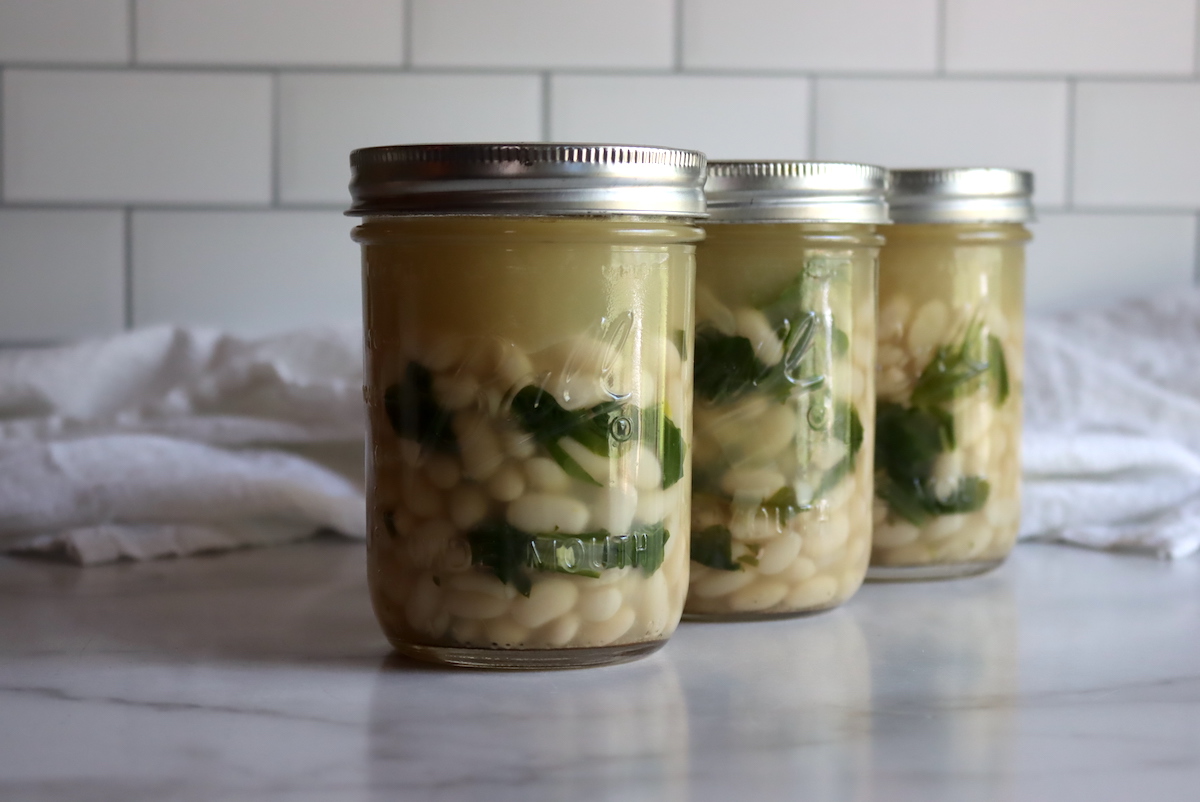
Altitude Adjustments for Canning Soup
Canning time remains the same regardless of altitude. However, the processing pressure increases as altitude increases.
Use the following table to determine the correct processing pressure if you’re above 1,000 feet in elevation.
For dial gauge pressure canners:
- 0 to 2,000 feet in elevation – 11 lbs pressure
- 2,001 to 4,000 feet in elevation – 12 lbs pressure
- 4,001 to 6,000 feet in elevation – 13 lbs pressure
- 6,001 to 8,000 feet in elevation – 14 lbs pressure
For weighted gauge pressure canners:
- 0 to 1,000 feet in elevation – 10 lbs pressure
- Above 1,000 feet – 15 lbs pressure
Serving White Bean and Kale Soup
This soup is truly heat and eat, meaning it’s perfect for those busy nights when you don’t have time to cook. Simply open a jar, heat up the soup, and enjoy!
However, if you’re looking to add a little something extra, consider pairing it with a crusty piece of bread or a side salad. I personally love topping it with freshly grated parmesan cheese.
We recommend just pouring the soup into a pot and reheating it for about 10 minutes, or until bubbling. Stir in a bit of cream, then top each bowl of soup with a bit of paprika and croutons to serve!
This is a great recipe for vegetarians and also uses up all the fresh greens from your garden. Be sure to give it a try!
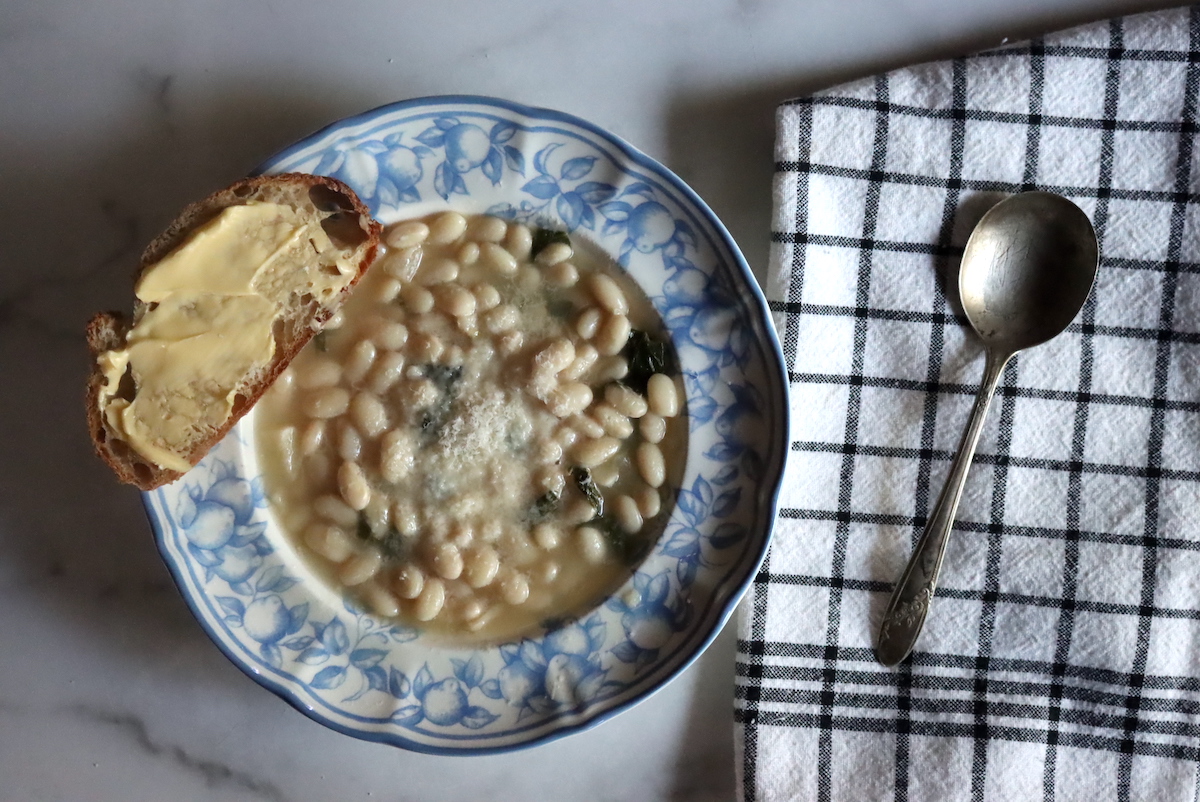
Soup Canning Recipes
There are so many different soup canning recipes out there, try these for your pantry:
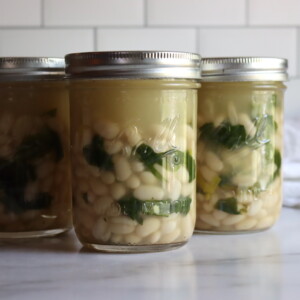
Canning White Bean and Kale Soup
Equipment
Ingredients
- 1 lb Great Northern Beans, dried, or other dry white beans
- 2 cups onions, peeled and diced
- 2 cups vegetable broth
- ½ lb kale, destemmed and chopped kale, chard, or other greens
- 1 Quart water
- 4 cloves garlic, minced
- 1 tbsp white wine vinegar
- 1 tsp non-iodized salt
- ½ tsp ground black pepper
For serving:
- Smoked paprika
- ¼ cup cream
- Croutons
Instructions
- Prepare your canning jars, lids, and the pressure canner itself. You will need seven 1-pint jars (500 ml).
- Fill the canner with a few inches (8 cm) of water, based on your manufacturer's instructions, and palace the canner on the stovetop over low heat with the jars inside. The water needs to be around 180 degrees Fahrenheit, or 82 degrees Celsius.
- Drain the water from the soaked beans, placing the beans in a large stockpot. Cover them with fresh water.
- Bring the beans to a boil, then remove them from the heat and drain the water.
- Put the beans back into the stockpot, then add the water, broth, garlic, onions, greens, salt and pepper, and vinegar. Bring everything to a boil over high heat, then reduce to a gentle boil and boil for five minutes.
- Remove the stockpot from the heat, then pour the soup or ladle it into the prepared jars. Try to ladle the solids first, so you have an even distribution among the jars.
- Divide the broth equally among the jars, leaving about one inch (or 2.5 cm) of headspace.
- Use a bubble removal tool to remove the bubbles, then recheck the headspace. If you're short on broth, use boiling water or hot chicken broth to top the jars off.
- Wipe the rims clean with a damp cloth, then put the bands and lids on the jars and load them into the pressure canner.
- Process the jars, based on the manufacturer's instructions, at 10 lbs of pressure (69 kPa) for 75 minutes for pints. Adjust for altitude or your manufacturer's recommendations as needed.
- When you are done processing, let the canner depressurize on its own. Remove the jars and allow them to cool on the counter for 12 hours.
- Check the seals and store your jars for up to one year.
Notes
Altitude Adjustments for Canning Soup
Canning time remains the same regardless of altitude. However, the processing pressure increases as altitude increases. Use the following table to determine the correct processing pressure if you’re above 1,000 feet in elevation.For dial gauge pressure canners:
- 0 to 2,000 feet in elevation – 11 lbs pressure
- 2,001 to 4,000 feet in elevation – 12 lbs pressure
- 4,001 to 6,000 feet in elevation – 13 lbs pressure
- 6,001 to 8,000 feet in elevation – 14 lbs pressure
For weighted gauge pressure canners:
- 0 to 1,000 feet in elevation – 10 lbs pressure
- Above 1,000 feet – 15 lbs pressure
Nutrition
Nutrition information is automatically calculated, so should only be used as an approximation.
Bean Canning Recipes
Looking for more ways to put healthy vegetarian protein into a jar?
Meal in a Jar Canning Recipes
Need a few more meal-in-a-jar canning recipes?

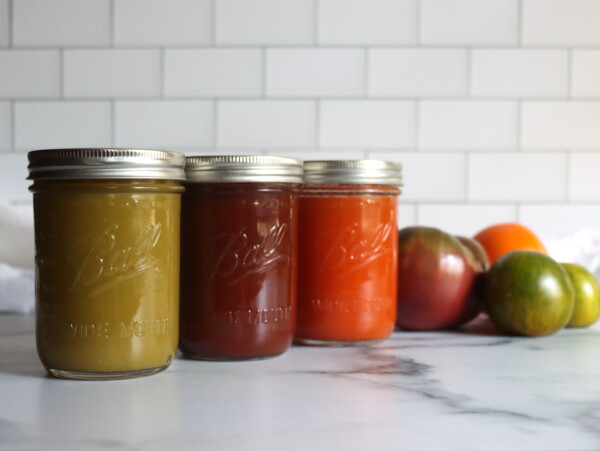
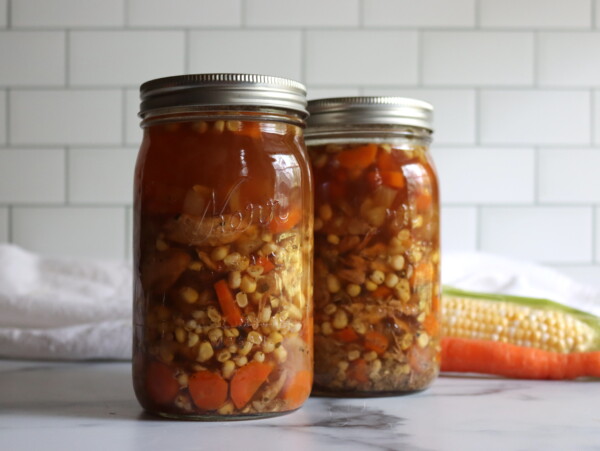
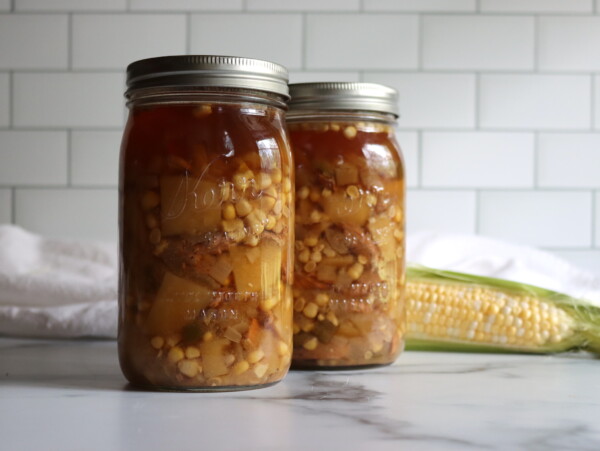
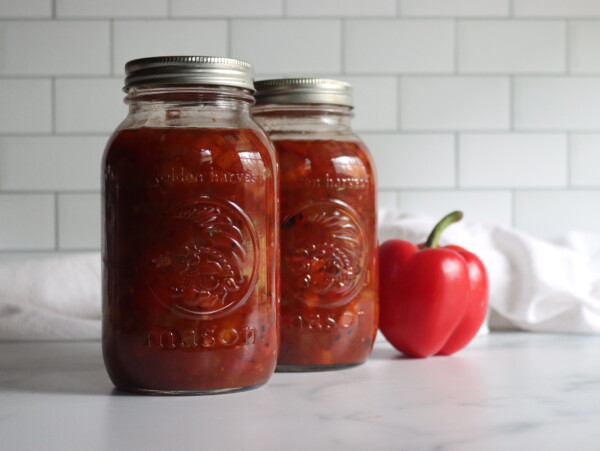
I’m considering trying this, but I can’t eat vinegar. Is it necessary to acidify the recipe? If so, can I substitute citric acid? Or is it added for flavor?
Also, if I want to add spices/herbs are there any limits on how much I can add?
The vinegar in this recipe is for flavor, not preservation. You can skip it altogether, or add a splash of white wine (if you can eat that) or a tiny bit of lemon juice. It really just helps round out the flavor.
As to spices, you can add any dry spices that you like from your spice shelf, that’s perfectly fine. The national center for food preservation says “reasonable amounts of dry spices” which I interpret as however much you’d normally use in everyday cooking (like a teaspoon/tablespoon of a few different spices, etc). Just don’t literally turn it into a paste with 1/2 cup or more of dry spices.
Enjoy!
How delicious! I used outer cabbage leaves for the greens and added a vegetable bouillon. I had one jar not seal, so I had for lunch. I added a spoonful of homemade garlic scape pesto when I heated it up and oh my, so good! I’ll definitely make this again!
Looks delicious! Any clue if chickpeas could work well in this? Looking to use up a couple of pounds…
Yup, this would work fine with chickpeas. Enjoy!
Would it be ok to add carrots and celery to this recipe?
Yes. This recipe is made using the USDA’s generic soup protocol, and those are fine additions. The main thing is that you can’t fill the jars more than halfway with solids, so if you’re adding more ingredients, just make sure that you’re not overfilling your jars and that they’re only half full when they go into the canner (the beans will expand during canning, and they’ll look more than half full when it’s finished). There’s more details on what you can and can’t add to this recipe here: https://creativecanning.com/choice-soup-canning-recipe/
Could I use pinto beans? Thanks Scott
Yes, all dry beans are considered equivalent in canning recipes. Enjoy!
I was so excited to try this recipe! I followed it exactly except I used chicken broth instead of vegetable broth. I left 1″ of headspace, but all my jars lost liquid, and the contents lost a lot of color. The kale lost its vibrant green and the beans look yellow instead of white – maybe due to my stock? Any insight would be appreciated!
The beans getting a bit yellow can either be your beans or your stock, but it can also be if the canner got extra hot during the canning process and some of the natural sugars in the beans caramelized a bit. Still tasty though. The greens darkening is going to depend on your exact green variety, some keep color better than others in canning.
This looks so good and I’m looking for more ways to preserve the abundance of kale in my garden! Would I be able to use homemade chicken stock instead of vegetable stock in this recipe?
Yup, you can use any type of broth or stock in this recipe, including chicken, beef, etc. Enjoy!